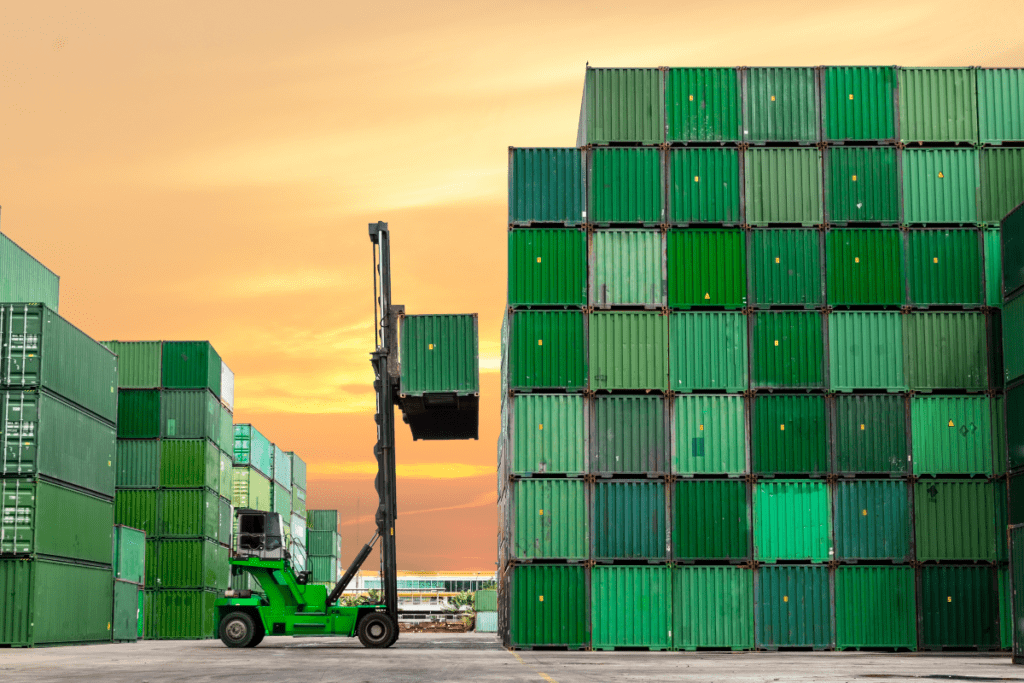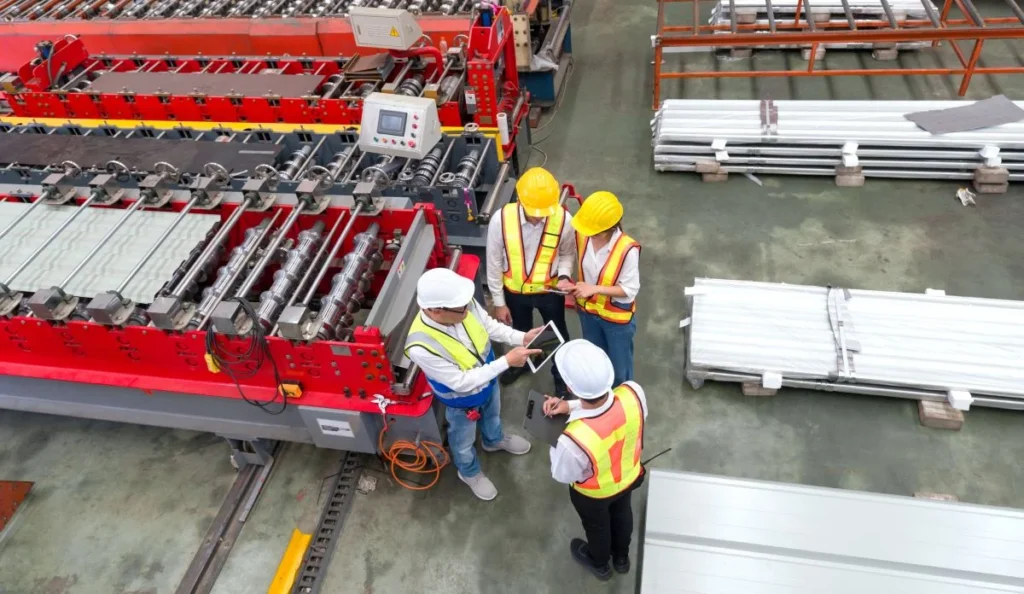
Table of Contents
- The EU’s Energy Efficiency Directive (EED)
- Government Policies Supporting Energy Efficiency
- 1. Grants and Rebates for Energy Efficiency in Manufacturing
- 2. Performance-Based Incentives
- 3. Tax Incentives for Energy Efficiency
- 1. Reduced VAT Rates on Energy-Efficient Products
- 2. Tax Credits and Deductions for Energy Efficiency Improvements
- 3. Accelerated Depreciation for Energy-Efficient Investments
- 4. Energy Tax Reductions and Exemptions
- 5. Incentives for Building Renovations
- 6. Eco-Bonus Schemes
- 7. Green Investment Tax Relief
- 4. Loan Programmes & Financing Options
- Direct Loans
- Loan Guarantees
- 5. Education and Training Programmes
- Energy Efficiency in Manufacturing Policy: Ireland’s Approach
- 1. SEAI EXEED Grant Scheme
- 2. SEAI Accelerated Capital Allowance (ACA)
- 3. SEAI Support Scheme for Energy Audits
- 4. SBCI Energy Efficiency Loan Scheme
- Takeaway
Energy efficiency is a fundamental component of the European Union's plan to achieve carbon neutrality by 2050. By systematically reducing energy consumption and improving energy usage across sectors, the EU aims to decrease greenhouse gas emissions, strengthen energy security, and reduce reliance on fossil fuels. This article delves into the EU's energy efficiency policies, the incentives offered to industries and businesses, and their overall impact.
Encouraging energy efficiency requires a multi-faceted approach. When it comes to incentivising energy-efficient practices, the government has many levers to pull, ranging from financial support to regulatory frameworks aimed at driving impactful change.

The EU’s Energy Efficiency Directive (EED)
The Energy Efficiency Directive (EED) forms the backbone of the EU’s energy efficiency strategy. First adopted in 2012 and revised in 2021 as part of the Fit for 55 package, the EED outlines ambitious targets:
- A binding EU-wide target to reduce primary and final energy consumption by 11.7% by 2030 compared to the 2020 baseline.
- Mandatory annual energy savings of 1.5% for member states.
- Measures to improve the energy efficiency of buildings, industries, and public institutions.
To know more on the various targets, read the full text of the Energy Efficiency Directive.
Government Policies Supporting Energy Efficiency
Some government policies are more direct, providing funds directly in the hands of manufacturers. Other policies are more subtle and indirect, such as tax incentives or education programmes.
Government incentives typically come in one of the below 5 different forms:
- Grants and Rebates
- Performance-based Incentives
- Tax Incentives
- Loan Programmes and Financing Options
- Educational or Training Programmes
1. Grants and Rebates for Energy Efficiency in Manufacturing
Grant and rebate programmes directly provide government funds to businesses for the purposes of subsidizing the costs to undertake specific energy efficiency steps. In both instances, businesses must submit applications in order to be considered for funds. Governments receive the applications and make decisions about which businesses meet the criteria for funding.
The European Union (EU) offers a variety of grants and rebates to promote energy efficiency within the manufacturing sector. Key initiatives include:
- Cohesion Policy Funds: The total budget for 2021-2027 is €373 billion, with approximately €12 billion dedicated to energy-efficient renovation of buildings.
- Innovation Fund: The EU has committed €3.6 billion through the Innovation Fund to bring innovative technologies to market in energy-intensive industries, hydrogen, renewable energy, and manufacturing components for energy storage and renewables.
- Connecting Europe Facility (CEF): For the period 2021-2027, the CEF has a budget of €42.3 billion, with €8.7 billion dedicated to supporting investments in EU energy infrastructure networks.
European Climate Data Dashboard
- Modernisation Fund: This fund supports the modernization of energy systems and improvement of energy efficiency in 13 lower-income EU Member States.
2. Performance-Based Incentives
Performance-based incentives are similar to rebates in that funds are distributed after actions are taken. The difference is that rebates are generally provided for simply undertaking actions, while performance-based incentives are provided for achieving results.
Unlike grants, businesses can apply for and receive performance-based incentives in an ongoing manner; A manufacturer can qualify for a performance-based incentive for each year in which you qualify. These incentives reward measurable energy savings, encouraging businesses to implement effective energy-saving measures.
- Energy Efficiency Obligation Schemes (EEOS): Under the EU Energy Efficiency Directive, Member States are required to establish EEOS, which mandates energy companies to achieve annual energy savings by implementing energy efficiency measures among their customers. These schemes create a market for energy savings, incentivizing companies to develop and deploy effective energy efficiency solutions.
- Pay-for-Performance (P4P) Schemes: P4P programs compensates energy efficiency improvements based on actual, metered energy savings. Unlike traditional subsidies that provide upfront payments, P4P schemes offer payments after verifying the energy savings achieved. This approach transfers performance risk to service providers, ensuring that incentives are directly linked to the effectiveness of energy efficiency measures.
- Enhanced Capital Allowances (ECA): Some EU countries offer ECAs, allowing businesses to claim 100% first-year tax relief on investments in energy-efficient equipment. This performance-based incentive encourages manufacturers to invest in technologies that meet specific energy efficiency criteria, promoting the adoption of high-performance equipment.

3. Tax Incentives for Energy Efficiency
A tax incentive is a mechanism that encourages energy efficiency by lowering the tax burden of businesses that undertake particular measures or achieve certain goals.
They typically come in the form of either tax relief (also known as tax deductions) or tax credits. Tax relief or tax deductions lower a business’s tax burden by reducing the total amount of income that is considered “taxable”.
Energy efficiency in different sectors, particularly manufacturing, construction, and transportation. These incentives are aligned with the EU's overarching climate and energy goals, including achieving carbon neutrality by 2050. Key incentives include:
1. Reduced VAT Rates on Energy-Efficient Products
Many EU countries offer reduced Value-Added Tax (VAT) rates for purchasing energy-efficient products such as:
- Insulation materials
- Solar panels and renewable energy equipment
- High-efficiency heating and cooling systems
These lower VAT rates reduce upfront costs for businesses and individuals, encouraging investment in sustainable technologies.
2. Tax Credits and Deductions for Energy Efficiency Improvements
Member states like Germany, France, and Italy provide tax credits or deductions for businesses and homeowners investing in:
- Energy-efficient building renovations
- Upgrades to heating, ventilation, and air conditioning (HVAC) systems
- Renewable energy installations such as solar or wind power systems
These credits help offset the financial burden of adopting sustainable practices.
3. Accelerated Depreciation for Energy-Efficient Investments
Several countries allow businesses to accelerate the depreciation of energy-efficient equipment, enabling them to deduct a significant portion of the investment cost from taxable income in the first few years. This incentive improves cash flow and makes such investments more financially viable.
4. Energy Tax Reductions and Exemptions
Under the EU Energy Taxation Directive, member states can implement:
- Reduced energy taxes for businesses using high-efficiency cogeneration systems.
- Tax exemptions for industries adopting energy-saving technologies or renewable energy sources.
5. Incentives for Building Renovations
The EU Renovation Wave Strategy supports energy efficiency in buildings through tax incentives at the national level. These include:
- Property tax reductions for energy-efficient renovations.
- Income tax deductions for expenses related to improving building energy performance.
6. Eco-Bonus Schemes
Countries like Italy offer eco-bonus programs, where tax deductions can reach up to 65% of the costs for implementing energy-saving measures in residential and commercial buildings.
7. Green Investment Tax Relief
Some EU states provide tax relief for green investments, such as capital allowances for renewable energy systems or energy-efficient machinery.

4. Loan Programmes & Financing Options
Governments sometimes leverage loan financing programmes to provide capital to manufacturers for investments in energy-efficient equipment or practices. Loan programmes can take the form of direct loans, or loan guarantees.
Direct Loans
In direct loans, manufacturers submit applications to government departments, and the government itself provides the funds for the loan. Manufacturers then make loan repayments directly to the government department which originated the loan. Government loans typically carry below-market interest rates, so that repayments are lower. Governments incentivize energy efficiency in manufacturing by making below-market-rate loans available to manufacturers for specific energy efficiency projects or equipment.
Loan Guarantees
Loan guarantees are different; and less direct. In the case of loan guarantees, private lenders provide the funds, while the government acts as a guarantor for the loan. This means that if the manufacturer defaults on the loan, the government will assume the debt obligation. A government loan guarantee lowers the risk of non-payment to the private lender. Because of this, private lenders can offer government-guaranteed loans at lower rates. Governments incentivize energy-efficient manufacturing by providing guarantees for loans that are meant to fund energy-efficient equipment and practices. This reduces the ultimate cost of the equipment to the manufacturer.
5. Education and Training Programmes
A well-trained workforce is essential for implementing and maximizing the benefits of energy-efficient practices. Governments can collaborate with educational institutions and industry associations to develop training programs and certifications focused on energy management and sustainable manufacturing practices. By equipping workers with the necessary skills and knowledge, manufacturers can effectively implement energy-saving measures, optimize operations, and achieve long-term sustainability goals.

Energy Efficiency in Manufacturing Policy: Ireland’s Approach
In Ireland, the government has implemented various regulatory incentive schemes aimed at promoting energy efficiency within the manufacturing industry. These initiatives are designed to encourage businesses to adopt sustainable practices, reduce their energy consumption, and lower their carbon footprint. See below for some of the key regulatory incentive schemes currently in place
1. SEAI EXEED Grant Scheme
The Sustainable Energy Authority of Ireland (SEAI) offers the EXEED Grant Scheme to help Irish businesses fund energy efficiency projects such as heating, cooling, refrigeration and manufacturing processes. SEAI EXEED is an example of a grant scheme: Businesses submit applications to SEAI (an Irish government entity) to appeal for direct financial funds. These funds do not need to be repaid. Qualifying applicants can secure up to €3M per project through the scheme. You can learn more about the SEAI EXEED Grant Scheme here.
2. SEAI Accelerated Capital Allowance (ACA)
The SEAI Accelerated Capital Allowance (ACA) scheme is an example of a tax incentive programme. Specifically, the ACA scheme is a tax relief scheme, in that it helps you lower the amount of your income which is considered “taxable”. The ACA scheme allows sole trader or corporation manufacturers to deduct the full cost of energy-efficient equipment from their taxable income during the year in which the equipment was purchased.
To qualify, the equipment that is purchased must be on the SEAI’s list of approved energy-efficient equipment. SEAI’s list includes equipment such as lighting, HVAC, mechanical systems, and BEMS systems such as Mavarick’s machine monitoring and energy management systems.
3. SEAI Support Scheme for Energy Audits
The Irish government entity SEAI also provides a grant scheme that specifically provides funding for energy audits. Again, this is a grant mechanism, so manufacturers must submit an application to receive the funding. But again, as a grant scheme, any money provided through the scheme does not need to be repaid.
An energy audit is a thorough investigation of a manufacturing operation’s usage of energy, with a special eye on identifying the most impactful energy efficiency priorities. For a full understanding of what an energy audit is and how they proceed, see What is an Energy Audit in Manufacturing?
4. SBCI Energy Efficiency Loan Scheme
The Strategic Banking Corporation of Ireland (SBCI) is in fact an entity of the Irish government (despite having the word “corporate” in its name). The SBCI was formed to ensure that Irish businesses could access funding even when the private sector could not or would not offer it. SBCI offers an Energy Efficiency Loan Scheme to help manufacturers fund projects to help them reduce their energy draws.
The SBCI’s loan scheme is an example of a loan guarantee program. Businesses submit applications directly to the SBCI website, and if approved, receive a certificate of approval from SBCI. The business then provides this certificate to private lending institutions within the regular course of applying for a loan. If approved by the private lender, the manufacturer can then avail of below-market interest rates to fund purchases of approved energy-efficiency equipment.
A list of approved energy-efficiency equipment can be found on the SEAI website. The list includes Energy Management Systems (EMS) like those offered by Mavarick.
Takeaway
The European Union’s policies and incentive structures, from grants and tax relief to loan schemes and performance-based rewards, offer manufacturers multiple pathways to adopt energy-saving technologies and practices.
These measures not only drive sustainability but also strengthen long-term competitiveness. Prioritising energy efficiency today helps manufacturers build resilience, cut energy costs, and meet evolving environmental standards. Ready to optimise your manufacturing energy efficiency?
Contact Mavarick today to explore innovative solutions that simplify energy management and drive long-term sustainability.
Carbon Accounting System
Carbon Emissions Reporting for the Supply Chain
- Visible Supply Chain
- Quality Data You can Trust
- Auditable Reports

